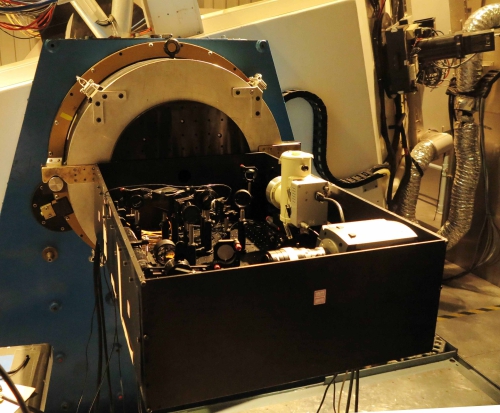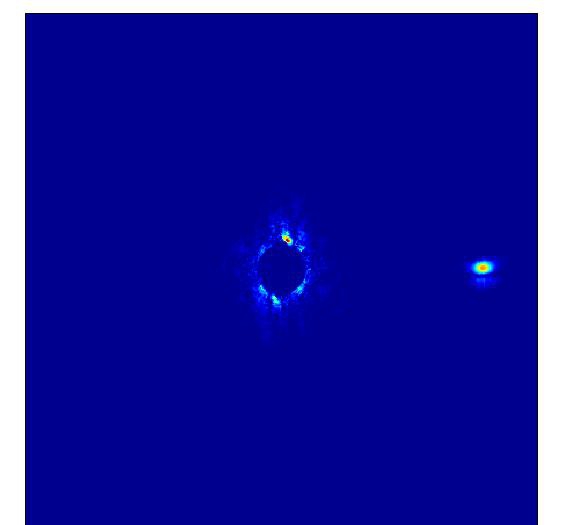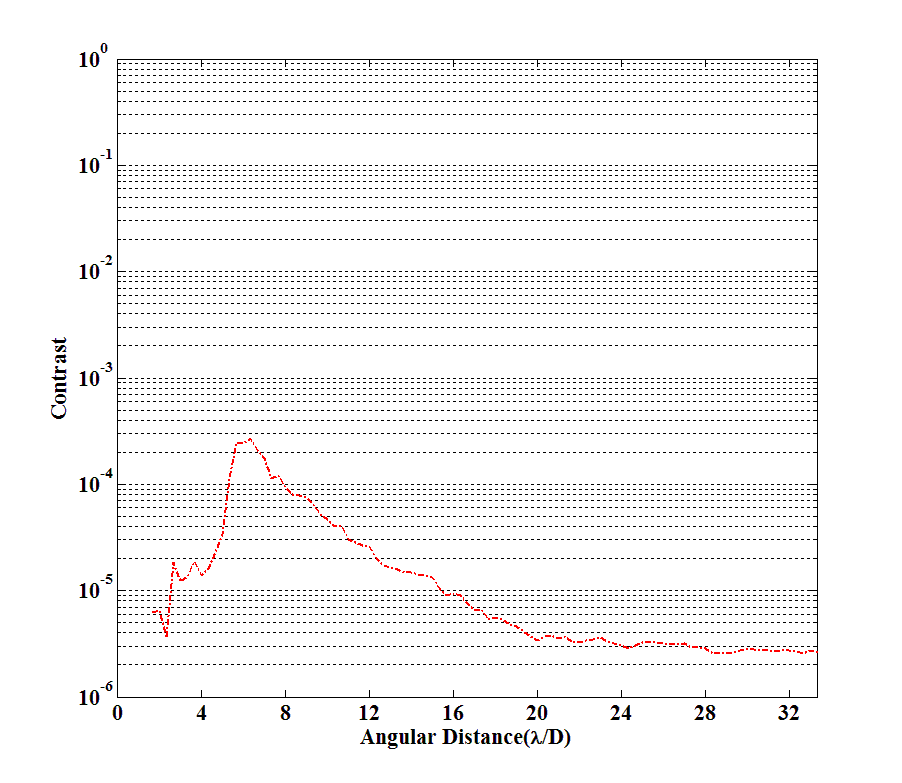On Jan. 12-18th, 2015, Nanjing Institute of Astronomical Optics & Technology (NIAOT) collaborates with California State University Northridge (CSUN), has tested the Portable Extreme Adaptive Optics (Ex-AO) for exoplanet imaging at Apache Point Observatory (APO) in New Mexico State. The Ex-AO works stable in NIR H band. For the first time, we verify the instrument can provide an imaging contrast of 10E-5. This observation is sponsored by the Major International (Regional) Joint Research Project awarded from the National Natural Science Foundation of China (NSFC, Grant No of 11220101001; PIs of Prof. Yongtian Zhu in NIAOT and Prof. Deqing Ren in CSUN). We have purchased 2 nights time of the Astrophysical Research Consortium (ARC) 3.5-meter telescope at APO for this observation. As a visiting instrument, the ExAO was shipped to APO site in advance, our team members quickly build and calibrate the AO system on site, and install it on to the Nasmyth A2 (NA2) interface of the ARC 3.5-meter telescope. 
Figure: Ex-AO installed on the NA2 interface of APO 3.5-meter telescope Here we select the observation results of alp Tau and kap Gem, respectively. During the observation, the average seeing varies from 1.2”~1.4”, and the wind speed varies from 5~13m/s. As shown by the video of alp Tau under short exposure time before and after AO correction, the Ex-AO can stably provide the effective correction that close to diffraction-limited imaging. The energy of the target star mostly concentrates in the Airy disk area, after the AO correction.
Video:alp Tau before and after AO correction The observation for kap Gem is recorded under long exposure time. Kap Gem is a binary star with a magnitude of V = 3.57 for the primary. The final result is shown below, after AO correction and the data reduction of a dedicated IRS technique (Image Rotation Subtraction). The point spread function image is shown in the left, where the kap Gem B is clearly seen with a sufficient signal to noise ratio. And the achievable image contrast has reached on the order of 10E-5, which is shown in the right of the figure. This is the first time that our team get the imaging contrast at 10E-5 class, which also proves the Ex-AO is able to be used for the astronomical observation of exoplanet. 
Figure:Reduced Kap Gem after AO correction and IRS:PSF image 
Figure:the contrast curve It is the second time that ExAO verifies its success on 3~4 meter class telescopes, after the observation on ESO NTT 3.5-meter telescope in 2014. Comparing to the large telescopes of 8~10 meter class, the 3~4 meter telescope have more plenty observing time, which makes them ideal platform for exoplanet detection. But most of the 3~4 meter telescopes have not equipped with routine adaptive optics, which seriously limits the scientific researches on these telescopes. Therefore, the ExAO attracts many interests of the astronomers at APO, they consider ExAO can help a lot of scientific observations on the APO 3.5-meter telescope that have high-resolution imaging requirement. The ExAO still uses a 97-element deformable mirror, but its correction accuracy has been improved to 48 order of Zernike polynomials; the open-loop speed is 1000Hz; a scientific NIR H-band camera is applied to record PSF image. Our team plans to update the deformable mirror to a 277-element version, which matches the 3.5-meter aperture much better. The new ExAO system is expected to correct up to 100 orders of errors. The scientific observation for exoplanet imaging will be carried based on this updated system. Meanwhile the new ExAO can also serve as a common AO system for other high-resolution imaging observations. |